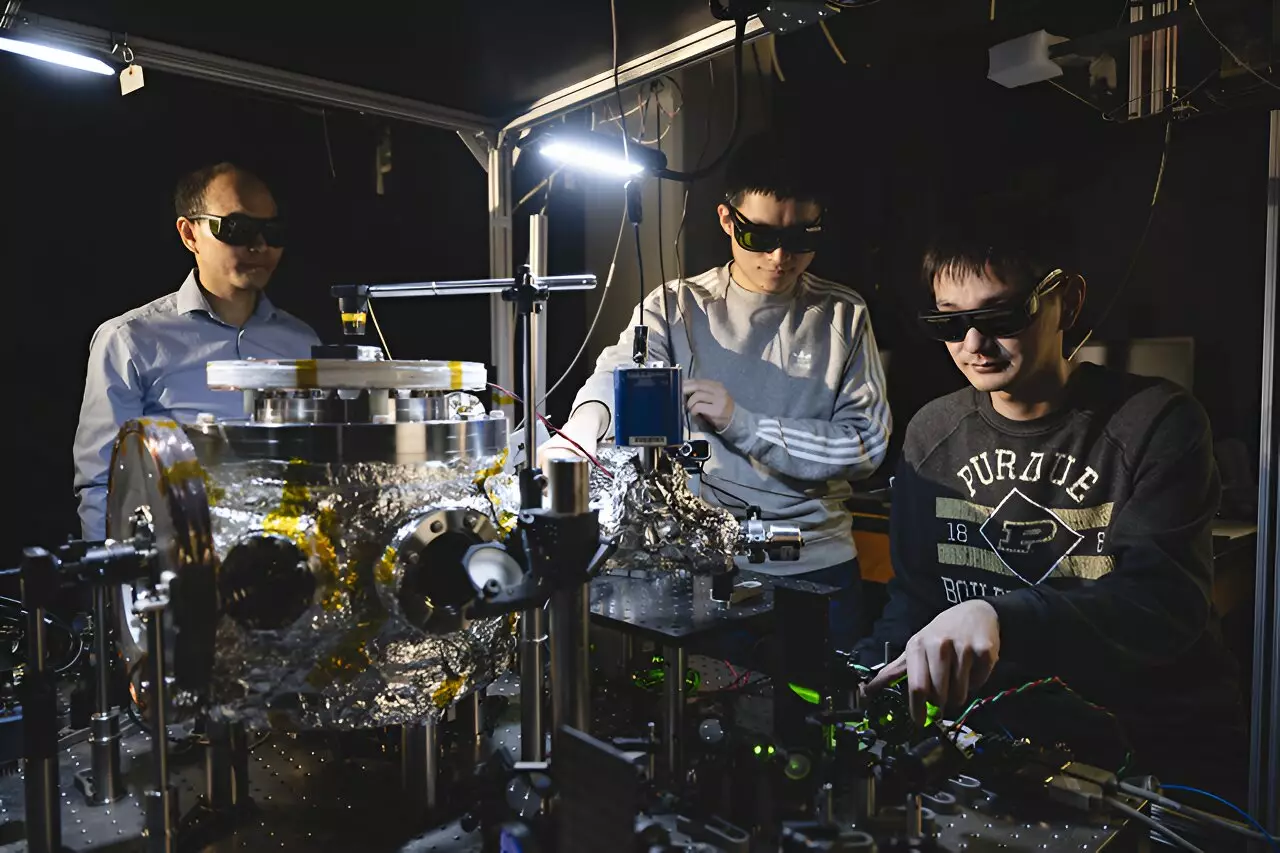In an unprecedented demonstration of modern physics, researchers at Purdue University are simplifying the extravagant concept of a disco by transforming it into a scientific marvel. At the center of this groundbreaking experiment is a fluorescent nanodiamond, a minute but significant artifact that spins at dizzying revolutions—up to an astonishing 1.2 billion times per minute. This tiny disco ball serves not merely as a whimsical metaphor but as a profound entry point into the realms of quantum mechanics and gravitational studies, providing researchers with a multi-faceted view of quantum behavior.
The team, under the leadership of Dr. Tongcang Li, has captured the attention of the scientific community by examining the phenomenon collectively known as the Berry phase. This particular aspect of quantum mechanics involves a geometric phase acquired over the course of adiabatic processes when a system undergoes cyclic evolution. Through their unique approach of levitating nanodiamonds and subjecting them to rapid spins, the Purdue physicists are peeling back the layers on critical questions surrounding spin qubits and their interactions within rotating systems.
Past endeavors in manipulating floating diamonds encountered significant hurdles in maintaining their position in a vacuous realm and interpreting their quantum states. Yet, Li and his research team mastered a technique that involves a custom-crafted ion trap to levitate these nanodiamonds in an ultra-high vacuum environment. This innovation represented a significant step forward, allowing for unprecedented observations and control over the dynamics of spin qubits within these levitated entities.
Li, alongside his capable research group consisting of Yuanbin Jin, Kunhong Shen, and other contributors, deftly engineered the experiment utilizing principles of levitodynamics. The successful levitation itself became a testament to the ingenuity of their design. Precise manipulations of the driving voltage allowed researchers to dictate the rotational dynamics of the nanodiamonds—akin to controlling a disco ball’s mesmerizing spin.
Of particular interest is the rotational behavior allowed by these nanodiamonds. As they spin, they emit and scatter multi-colored light, illuminating the path toward observing spin qubits in real-time. Using a combination of green and infrared lasers, Li’s team meticulously monitored the rotations of these diamonds, transforming abstract quantum states into observable phenomena. This level of control further enriched their investigation into the nature of the Berry phase, adding layers of complexity and depth to their findings.
Utilizing a smart combination of simulation software and photolithography for fabricating the integrated surface ion trap, the experimental setup was optimized to enhance the reading of quantum states. The strategic placement of electrodes enabled adjustments in rotational direction and levitation, underscoring the versatility of their findings. The ease with which they could switch the spin direction or halt the rotation altogether enhances potential applications for these nanodiamonds in various domains, including navigation and communication technologies.
Beyond its immediate applications in quantum mechanics, the research conducted at Purdue holds promising implications for broader industrial and technological advancements. The potential of levitating micro and nano-scale particles for precision measurements carries significant weight, especially regarding developing high-performing accelerometers and electric field sensors. As organizations like the Air Force Research Laboratory explore optically-levitated particles for resolving challenges in navigation, the groundwork laid by Li’s team may offer innovative solutions.
Moreover, the longstanding quest to reconcile quantum mechanics with general relativity represents a frontier of scientific inquiry. Understanding how gravity interplays with quantum phenomena could result in major breakthroughs in our understanding of the universe’s workings. The capacity to observe and detail the behaviors of these levitated diamonds as they navigate through theoretical frameworks opens gateways to future research aimed explicitly at quantifying gravity itself.
The work led by Tongcang Li and his team is not just a playful endeavor into the inanimate but a serious contribution to the broader scientific tapestry of quantum physics. They have creatively redefined our perspectives on quantum systems and levitodynamics, creating a platform brimming with possibilities. As they unveil each layer of this scientific disco, they illuminate the vital intersections of creativity, engineering, and physics, standing on the cusp of novel discoveries that could fundamentally reshape our understanding of both the microscopic and macroscopic worlds. The ‘disco party’ by Purdue Physicists not only showcases the elegance of quantum mechanics but also highlights an era ripe with exploration and innovation in the elusive dance of particles and forces.

